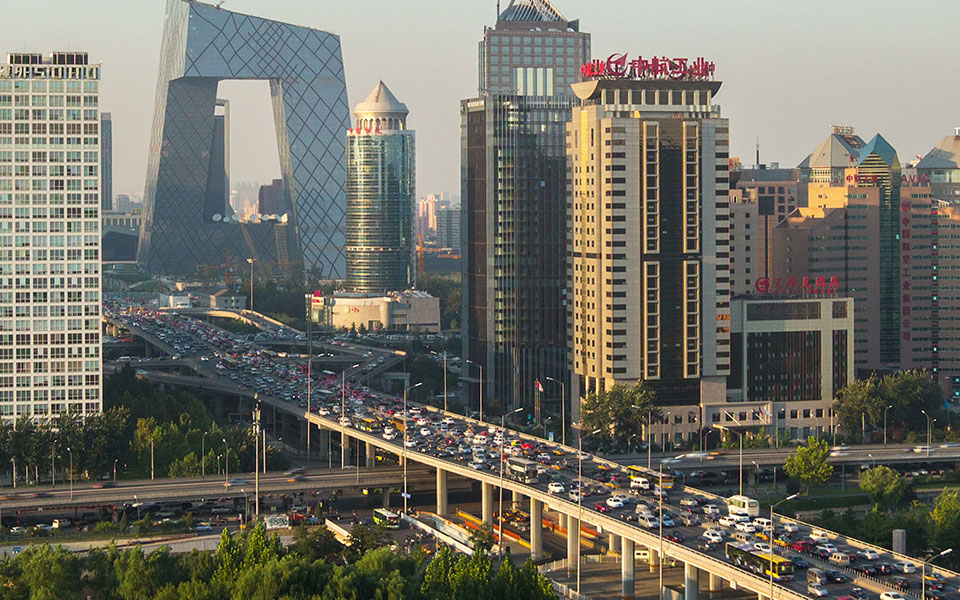Beijing, April 16: China remains the world's largest developing country despite having a a low per capita GDP, lingering urban-rural gap, weak industrial competitiveness and technological innovation, according to an economist.
The remarks were made by Wang Yuanhong, an economist at the State Information Centre, Xinhua news agency reported on Monday.
"We should look at both economic aggregate and per capita figures when measuring the real development level of a country," Wang said.
Despite being the world's second largest economy, China's per capita GDP in 2016 was only 80 percent of the world average, one-seventh of the US and was ranked the 68th globally.
"Chinese per capita consumer spending was only $2,506 in 2016, less than half of the world average and only 7 percent of the US."
The Engel's coefficient, which measures food expenditures as a proportion of total household spending, stood at 29.3 per cent in China, much higher than developed economies.
"It means the Chinese people still have to spend big on basic needs, and their expenditure on culture, health care, entertainment and tourism are much less than people in developed countries," Wang said.
He said China was still "a follower in technological innovation", with businesses inadequate in research and development.
"Eighty percent of core technology, most of high-end equipment, and core components are reliant on imports."
Despite emerging new technology, products and business models, China is yet to complete building an innovation-driven growth pattern, Wang said.
The disparity of people's incomes per capita between provinces can be as large as more than four times, and there is still a marked gap in infrastructure and public services between cities and villages.
"China's urbanisation ratio was only 58.52 per cent in 2017, far below the around 80 per cent of developed countries," Wang said.
Compared with developed countries, China lags behind in many other areas including environment protection, investment effectiveness and market supervision, the economist added.
Let the Truth be known. If you read VB and like VB, please be a VB Supporter and Help us deliver the Truth to one and all.
Panaji (PTI): As part of a crackdown against tourist establishments violating laws and safety norms in the aftermath of the Arpora fire tragedy, Goa authorities on Saturday sealed a renowned club at Vagator and revoked the fire department NOC of another club.
Cafe CO2 Goa, located on a cliff overlooking the Arabian Sea at Vagator beach in North Goa, was sealed. The move came two days after Goya Club, also in Vagator, was shut down for alleged violations of rules.
Elsewhere, campaigning for local body polls, AAP leader Arvind Kejriwal said the fire incident at Birch by Romeo Lane nightclub at Arpora, which claimed 25 lives on December 6, happened because the BJP government in the state was corrupt.
An inspection of Cafe CO2 Goa by a state government-appointed team revealed that the establishment, with a seating capacity of 250, did not possess a no-objection certificate (NOC) of the Fire and Emergency Services Department. The club, which sits atop Ozrant Cliff, also did not have structural stability, the team found.
The Fire and Emergency Services on Saturday also revoked the NOC issued to Diaz Pool Club and Bar at Anjuna as the fire extinguishers installed in the establishment were found to be inadequate, said divisional fire officer Shripad Gawas.
A notice was issued to Nitin Wadhwa, the partner of the club, he said in the order.
Campaigning at Chimbel village near Panaji in support of his party's Zilla Panchayat election candidate, Aam Aadmi Party leader Kejriwal said the nightclub fire at Arpora happened because of the "corruption of the Pramod Sawant-led state government."
"Why this fire incident happened? I read in the newspapers that the nightclub had no occupancy certificate, no building licence, no excise licence, no construction licence or trade licence. The entire club was illegal but still it was going on," he said.
"How could it go on? Couldn't Pramod Sawant or anyone else see it? I was told that hafta (bribe) was being paid," the former Delhi chief minister said.
A person can not work without bribing officials in the coastal state, Kejriwal said, alleging that officers, MLAs and even ministers are accepting bribes.





